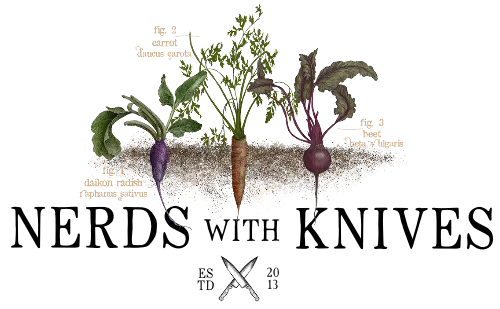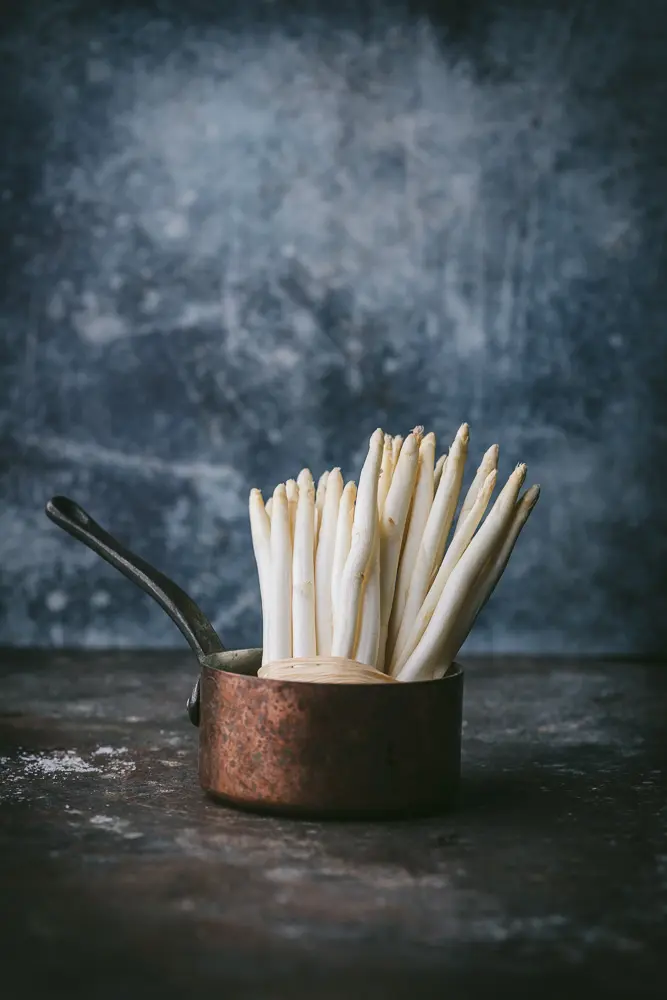So you’ve joined a CSA but you’re overwhelmed by your share? Our guide will help you make the most of your CSA produce!
We also made a seasonal produce page for each time of year. Also please check out our partner article about Hudson Valley CSAs where we introduce the Hudson Valley CSA Coalition and talk about other local resources.
The Index
Asparagus | Basil | Fresh Beans (Green Beans) | Beets | Broccoli | Broccoli Rabe | Cabbage | Carrots | Cauliflower | Celeriac | Celery | Chard | Corn | Cucumber | Eggplant | Escarole | Fennel | Garlic | Ground Cherries | Kale | Leeks | Onions | Parsnips | Peas and Pea Shoots | Peppers | Potatoes | Radishes | Ramps | Rhubarb | Rutabaga | Shallots | Spinach | Summer Squash | Sweet Potatoes | Tatsoi | Tomatoes | Winter Squash
Growing asparagus yourself can be a labor of patience, taking several years to fully develop. Fortunately, it’s something you’ll find in season locally, so even if your garden doesn’t provide, your local farms will. You’ll find them in your Hudson Valley CSA produce in the Spring.
Our favorite way to cook asparagus is to drizzle olive oil, salt and pepper on a tray of asparagus and roast it at 400F for about 15-20 minutes, until it’s well colored and tender.
We got the chance to try some white asparagus, which looks very different but can be cooked the same way. We also poached them with black garlic aioli.
BASIL
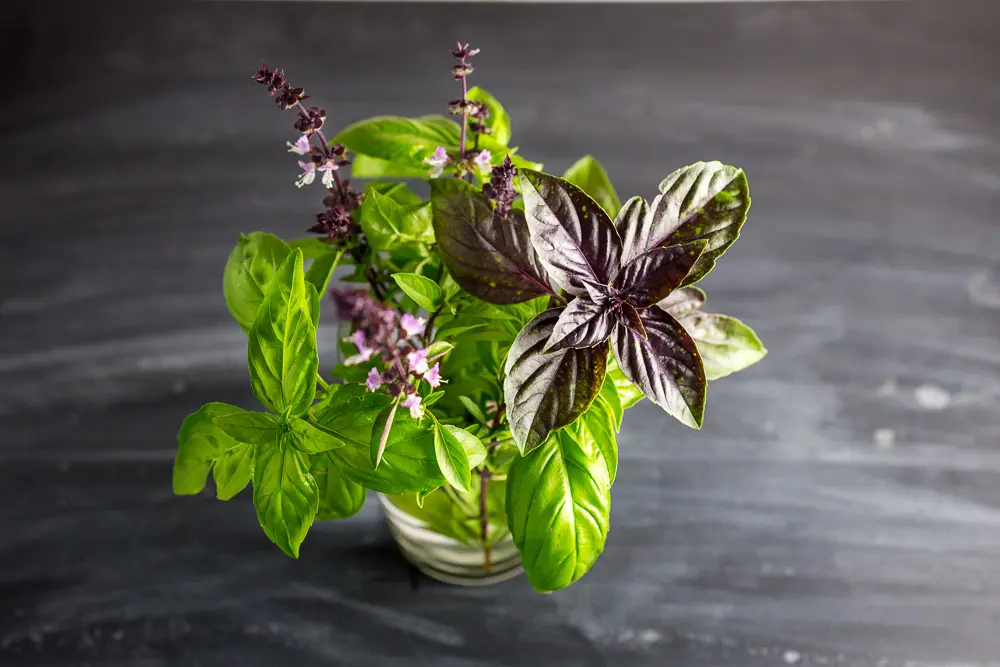
Basil is the summer herb that we always look forward to with the greatest urgency. Unless you have a warm spot in your house where you grow seedlings out-of-season, you’re going to wait, tapping fingers on the kitchen counter, until your local farm starts harvesting later in the year. We love it in dressings – combine it with other herbs in a Green Goddess, a nutty cheesy pesto, or a chimichurri for summer grilling. When you have good fresh tomatoes, combine them in a summer sandwich.
Or, make basil leaves into a martini when strawberries are in season!
FRESH BEANS

There are a lot of different terms you’ll find for the stage of a bean that’s harvested as a pod, before the beans inside grow too large: green beans, haricots verts, string beans. Beans can appear in many colors, including yellow and purple, and they rarely need de-stringing, so we like to just call them fresh beans.
And they’re best used fresh – within a couple of days. You don’t even need to refrigerate them. Just trim off the tops, cut into smaller sections if needed, and blanch for a minute or two in salted water. (Plunge them into an ice-bath afterwards if you want to preserve that green coloration.) And that’s it!
Or, for more of a braised application, we have a recipe for Caramelized Green Beans with Soy and Lemon.
BEETS
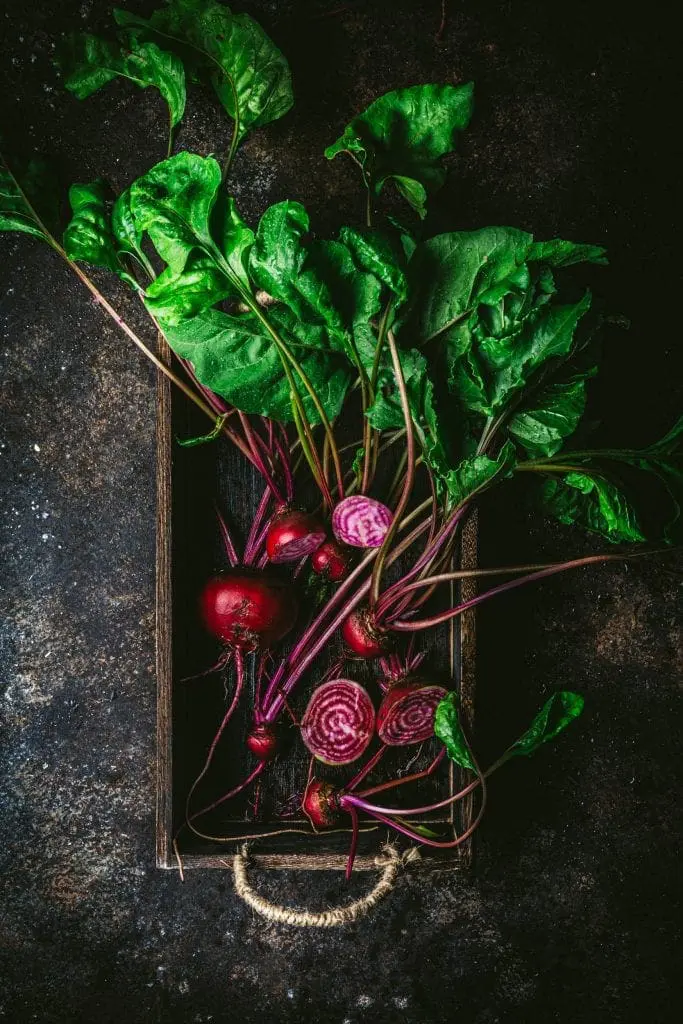
We buy pre-cooked beets more often than we’d like, which is a shame because they’re not at all daunting to prepare. Yes, cooking takes a little time, but once you’ve got cooked beets, you’ll use them all week in salads, pickles, or just speared with a fork right out of the fridge.
We always roast our beets (steaming works fine, too, of course, but remember to check the water level in your steamer every now and again). Don’t peel them until after they’re cooked; while they’re still a little warm, just rub them firmly with a kitchen paper towel to remove the skin.
If the fresh beets in your CSA produce come with their leaves attached, you can use the greens in the same way as chard.
We also love this recipe for Beet Soup with Caraway, and this one for Roasted Beet and Lentil Dip.
BROCCOLI
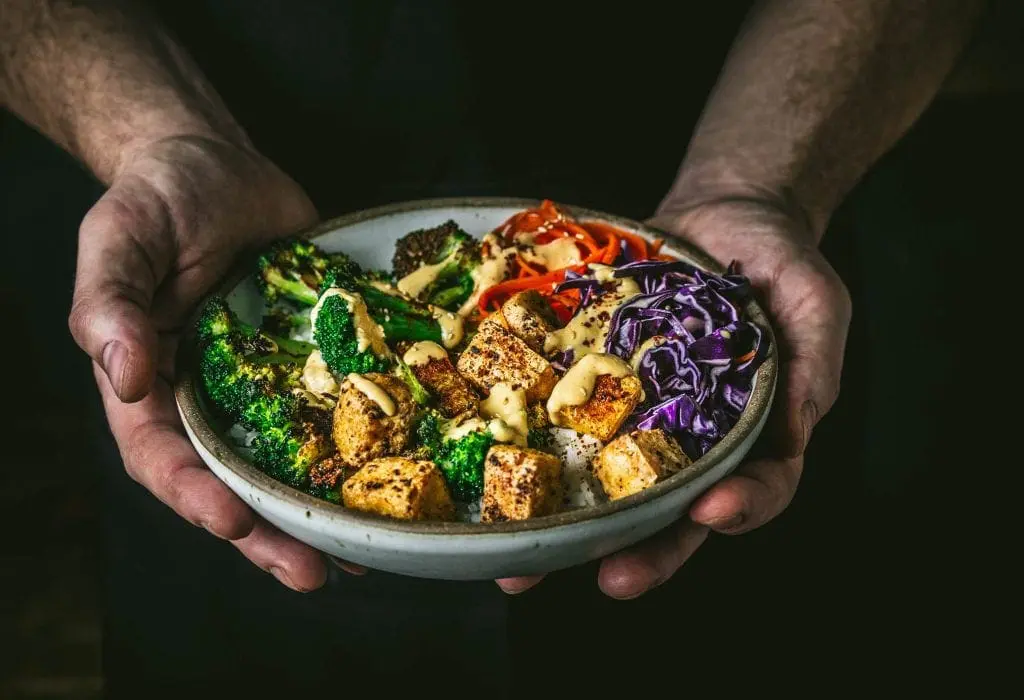
For us, broccoli is best prepared as a simple roast vegetable: trim and halve the large florets, drizzle with olive oil and salt, and cook in a 425F oven until the cut sides are dark and the flesh is fully tender.
You then have a side for pretty much any recipe, such as Tofu and Charred Broccoli Bowls with Kimchi–Miso Dressing.
We also like this recipe for Broccoli and Potato Soup.
BROCCOLI RABE
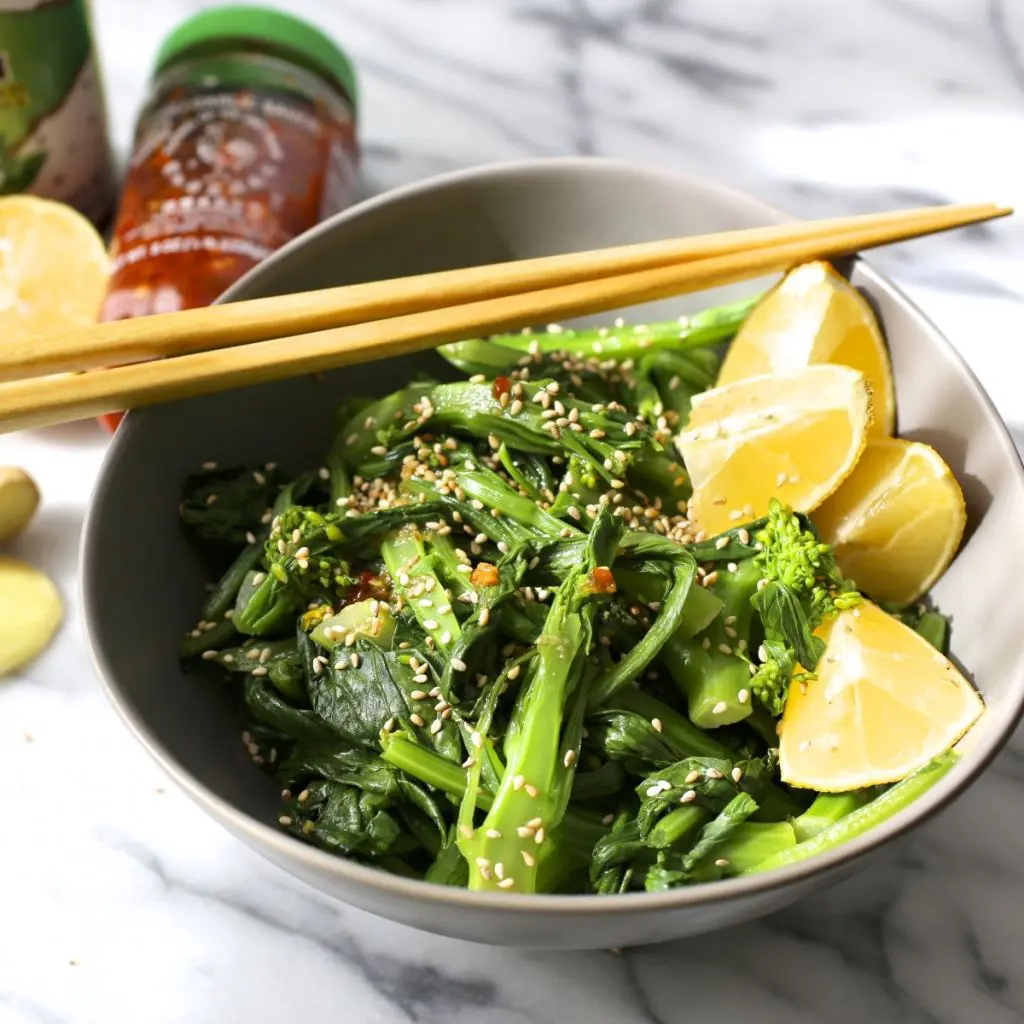
You can think of broccoli rabe as broccoli’s spicier cousin. Leafier and less bulbous, a bunch of rapini is a mustard green where the word “mustard” is absolutely justified. When cooked, the vegetable has an almost horseradish-y flavor that punches up anything you combine it with.
Cut off the thicker stem ends, then split down the middle and steam until the flesh is tender. Or roughly chop and sauté in olive oil, adding a little sliced garlic for a couple of minutes at the end.
Almost weekly, we combine broccoli rabe with cannellini beans and good Italian sausage in this pasta recipe. It’s a weeknight standard.
CABBAGE
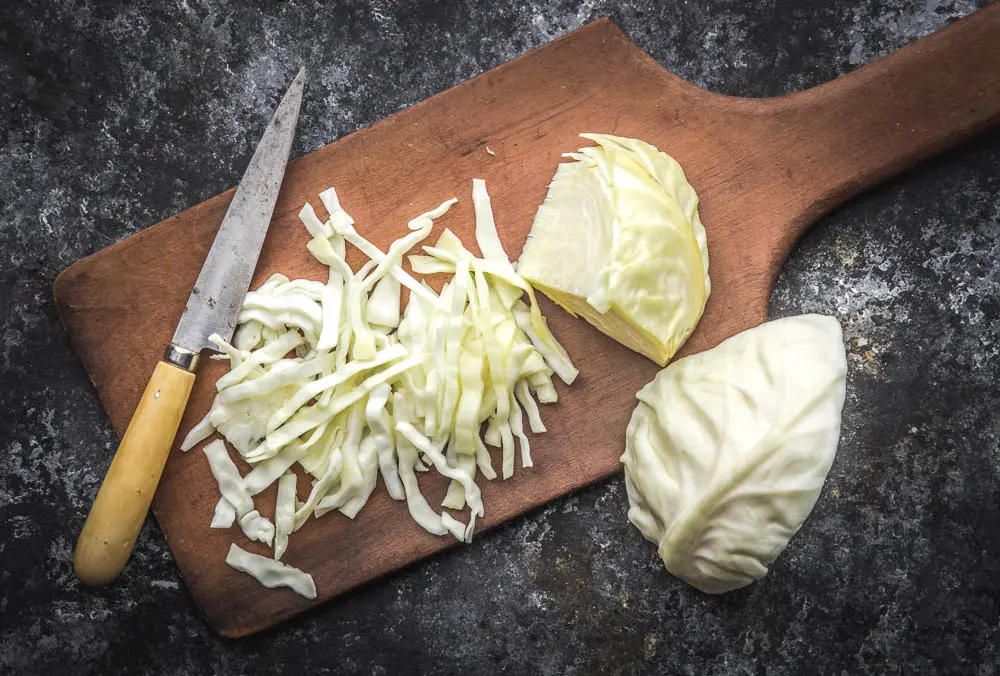
Cabbage, whether green or red, is our favorite vegetable to keep raw in a salad or slaw. It’s really versatile, which is why we love seeing it among our CSA produce.
- Shredded Brussels Sprout And Red Cabbage Salad With Walnuts And Pecorino
- Asian Cabbage and Fennel Salad
- Red Cabbage Salad with Roasted Cipollini Onions
- Red Cabbage Salad with Spicy Miso-Ginger Dressing
If we have a half or quarter of a head of cabbage left over in the fridge (this happens a lot), we’ll braise it in a pan until the edges are delightfully blackened, and then add onions and garlic to bulk up a stir-fry using leftover Chinese takeout.
CARROTS
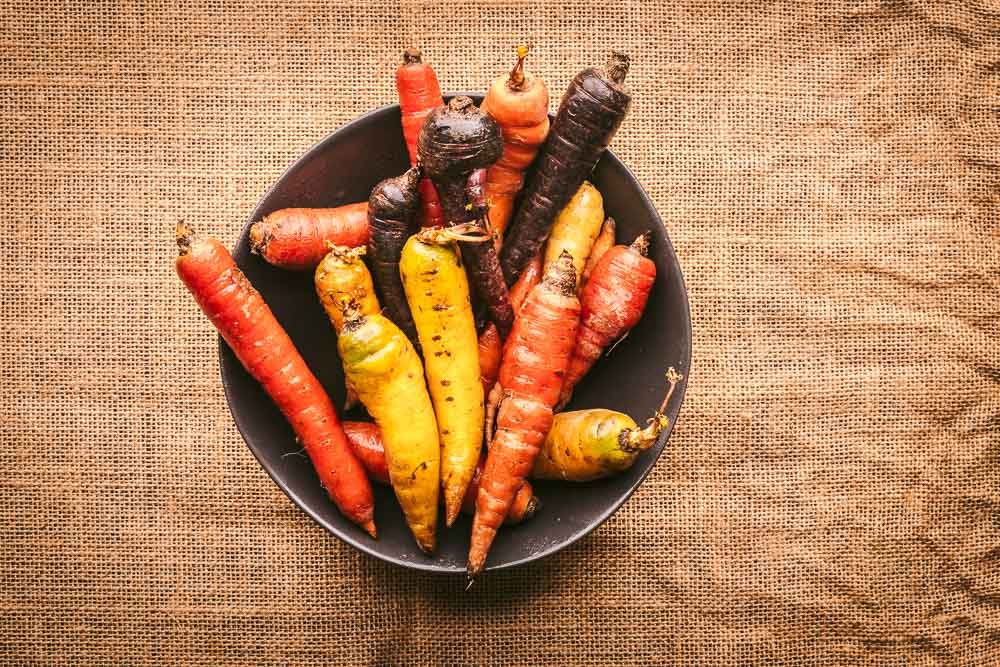
It may be untrue that carrots improve your eyesight — it was a myth invented by the British Navy to explain how they detected German U-Boats (plot twist: they’d cracked the Enigma code) — but they’re still a colorful sight for sore eyes. These days, orange is not the only carrot, and you might get a gorgeous rainbow variety in your CSA produce share.
If you’re looking to branch out from the roast-carrot standard (admittedly, it’s a favorite of ours), you could do worse than making a quick carrot pickle with daikon radish (we use this as a side for Bahn Mis and Vietnamese rice bowls).
Of course, sweet dishes are also an option – how about Carrot Cupcakes?
We recently made this vegetarian grain bowl with white beans and carrots, using cooked farro.
CAULIFLOWER

Cauliflower used to be a major farming staple on the cool mountain slopes of the Hudson Valley. Emily wrote a primer on cauliflower for Valley Table Magazine where you’ll find some recipes by local chefs that bring out its strengths.
Here are some other ways we like to cook it.
- Cauliflower-Cheddar Soup With Garlic Butter Croutons
- Mughlai Cauliflower
- Cumin-Roasted Cauliflower With Whipped Feta
(You’ll also find a recipe for Tipsy Cauliflower Cheese in our first cookbook, Cork and Knife!)
CELERIAC
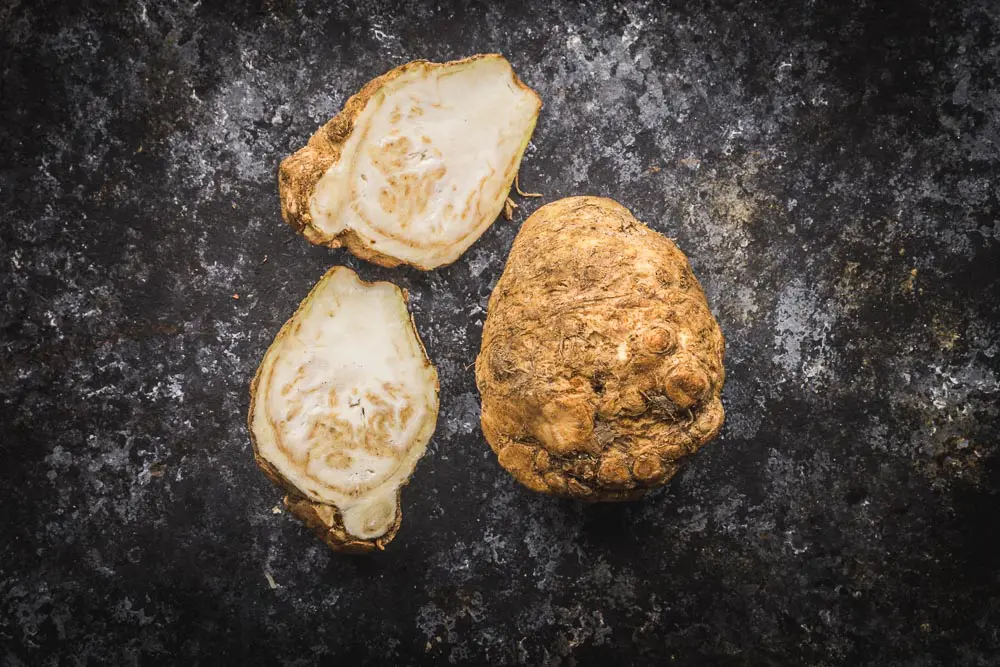
Celeriac may at first be a daunting vegetable, but once you peel off the thick, knobby exterior, it’s really versatile.
You can keep it raw, and use it like fennel or cabbage. It’ll remain firm and add a crisp, celery note when shredded finely into a slaw or salad. The exposed flesh will turn brown quickly, so keep the shredded celeriac in water, or mix with a little lemon juice, until needed.
One slaw recipe we like is to mix the celeriac with shredded apple and kohlrabi, and dress it lightly with a little mayonnaise, vinegar and wholegrain mustard.
Or, to cook, cut it into chunks and roast it like potatoes (about 30 – 40 minutes at 400F), or boil in salted water until tender (about 20 minutes). You can then mash it with a little butter.
CELERY
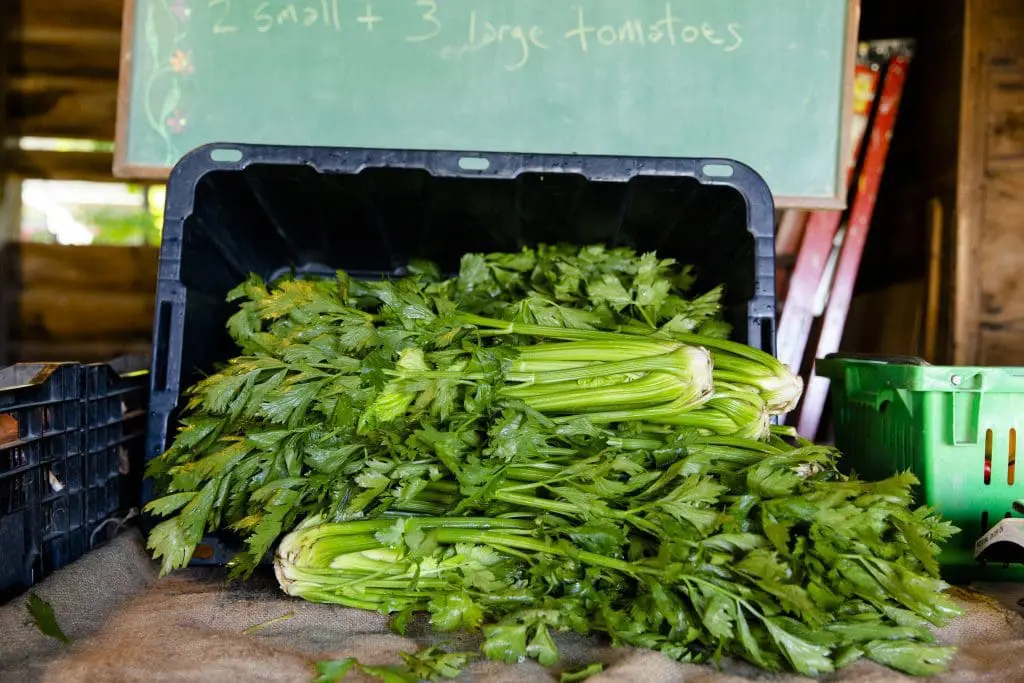
Celery is one of the crucial triumvirate of vegetables (with onion and carrot) chopped finely in a mirepoix. This forms the basis for a host of classic savory dishes including our Bolognese-like Pasta Gamush and White Bean and Escarole Soup. It also helps make our Thanksgiving stuffing.
Of course you can leave the celery raw and use it to scoop any number of fresh dips including Miso Hummus and White Bean, Garlic and Feta Dip.
CHARD

Swiss chard is two vegetables in one. The leaves cook like many other hardy greens. Any recipe that works with kale, spinach or cabbage will work with chard leaves. The stems, once trimmed and finely chopped, cook like celery stems, retaining a little more firmness. You can substitute for celery in a mirepoix with onion and carrot.
The chard stems can be green, red or yellow but they all cook up the same way.
CORN
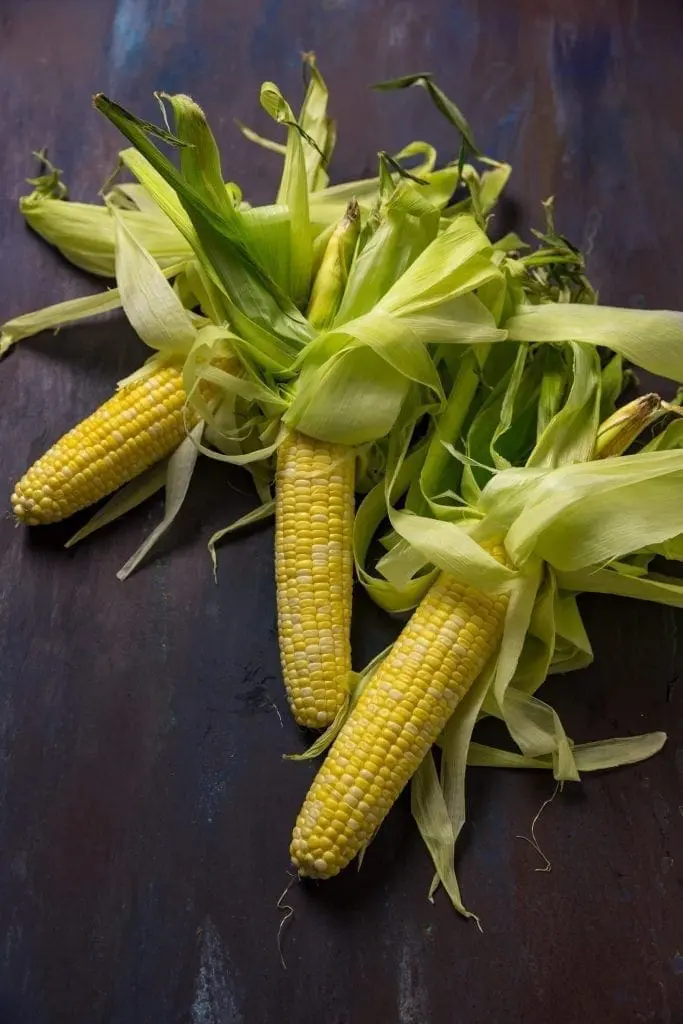
Along with tomatoes, corn is one of late summer’s produce heroes and one of the most looked-for CSA vegetables. When the kernels are at their sweet, tender peak, there’s almost nothing better. They’re also super versatile — you can simply grill them and eat them in your hand, or make something more elaborate – or even a sweet treat!
CUCUMBER
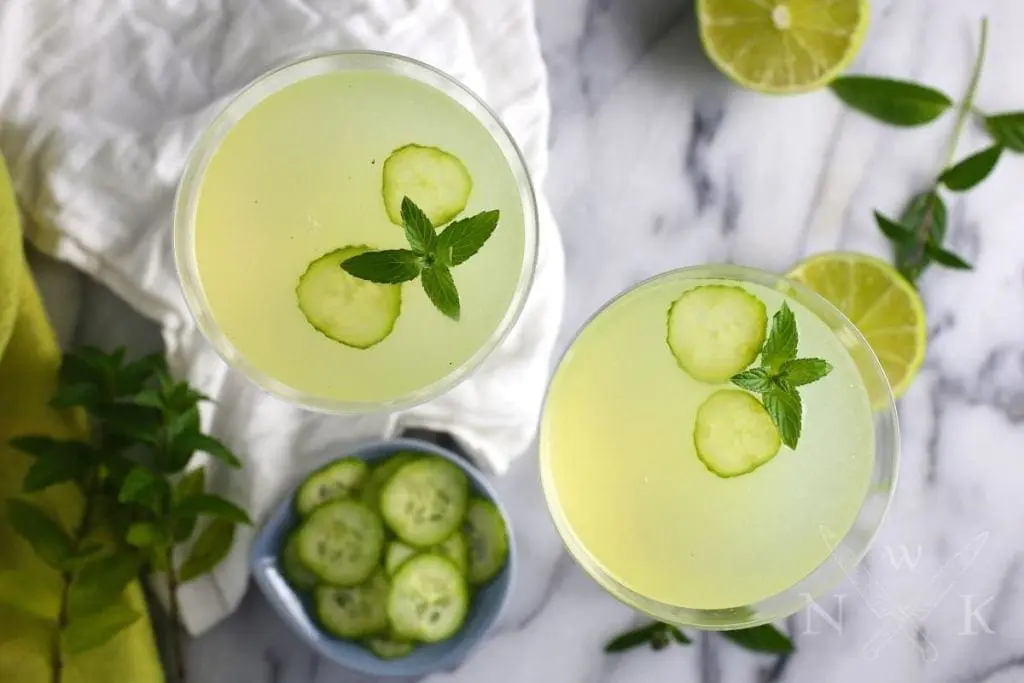
There’s nothing quite as refreshing as the scent of cucumbers in a summer selection. If you get English- or the smaller Persian style, you don’t even need to peel them. Most often, we’ll turn them into a quick pickle as a side to a rice dish (or our Miso Salmon).
EGGPLANT
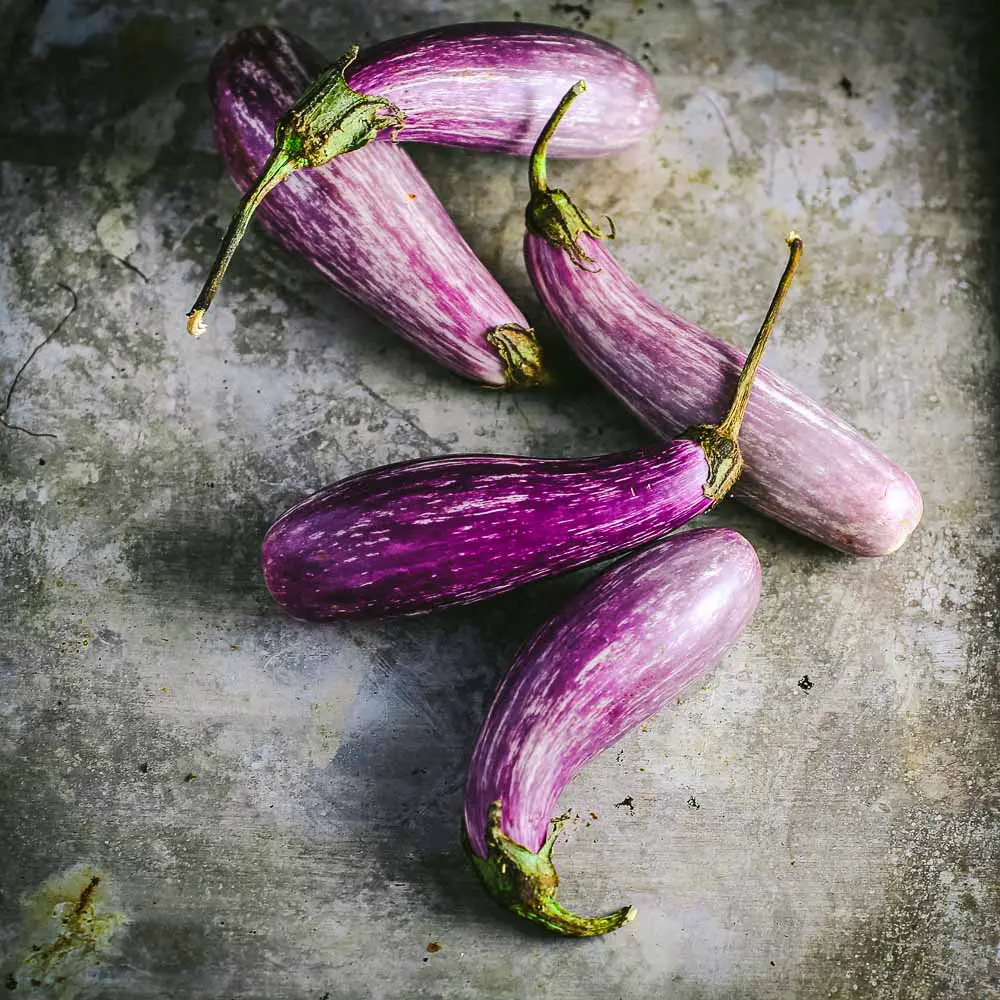
Along with summer tomatoes, the appearance of fresh season eggplants in our CSA produce share are our way to know that the warm months are upon us and it’s time to clean off the grill.
Ideally, eggplant are picked young, when their flavors are best and the flesh is sweetest. Left too long before harvest, they’ll develop seeds and become soft and bitter. If this is the case, you can slice and salt the exposed flesh. Many varieties, including the Asian eggplants which are now grown in our region, will remain small with less danger of bitterness.
Here are some eggplant recipes we turn to every summer:
ESCAROLE
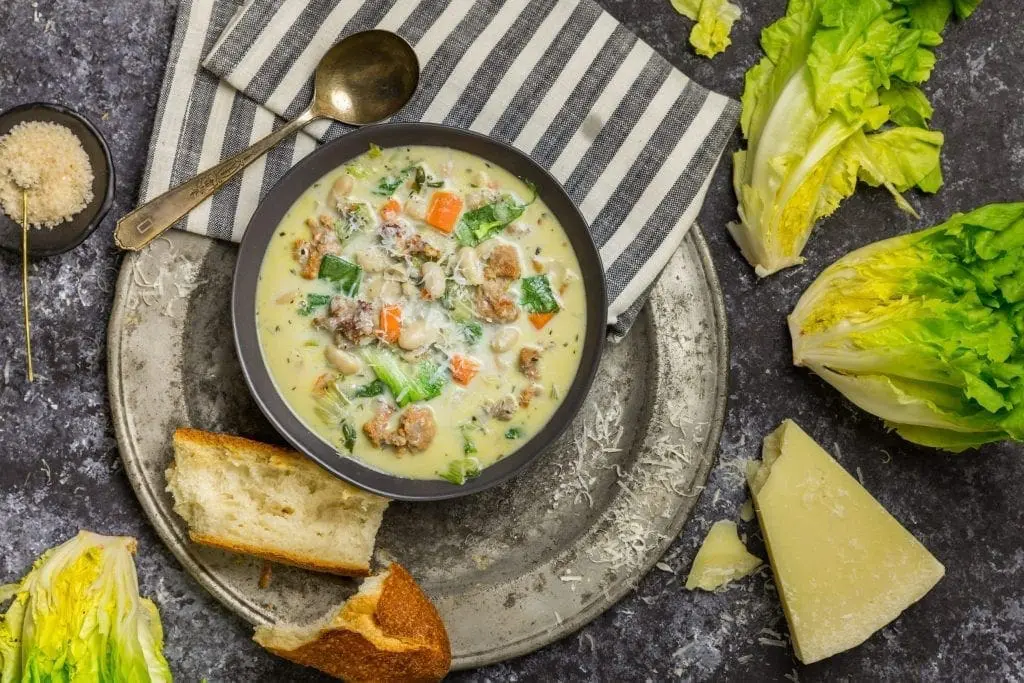
Escarole looks like a lettuce but cooks up like a tender green. You can use the leaves much like spinach, and it’ll hold its shape in the final dish. Our favorite use is in Sausage, White Bean and Escarole Soup.
Use it in any of the recipes where you’d use other hardy greens like spinach or kale. You can also simply sauté escarole for a quick side dish.
FENNEL

If you’re unfamiliar with using fennel in the kitchen, it might at first glance be one of the more intimidating items in your CSA produce box. The stems look like celery. It has a taste somewhat like licorice or aniseed. And what do you do with the dill-like tops?
The truth is, fennel is infinitely adaptable to a range of recipes. You can keep the stems raw, shredding it into a slaw, salsa or salad. The frilly, floral tops can be cut separately and used to garnish salad bowls. You can cook fennel down like onions, or leeks, to create a base with sweetness and complex flavors. We also like to use it in our Thanksgiving stuffing (cooked on the side, not in the bird!).
GARLIC
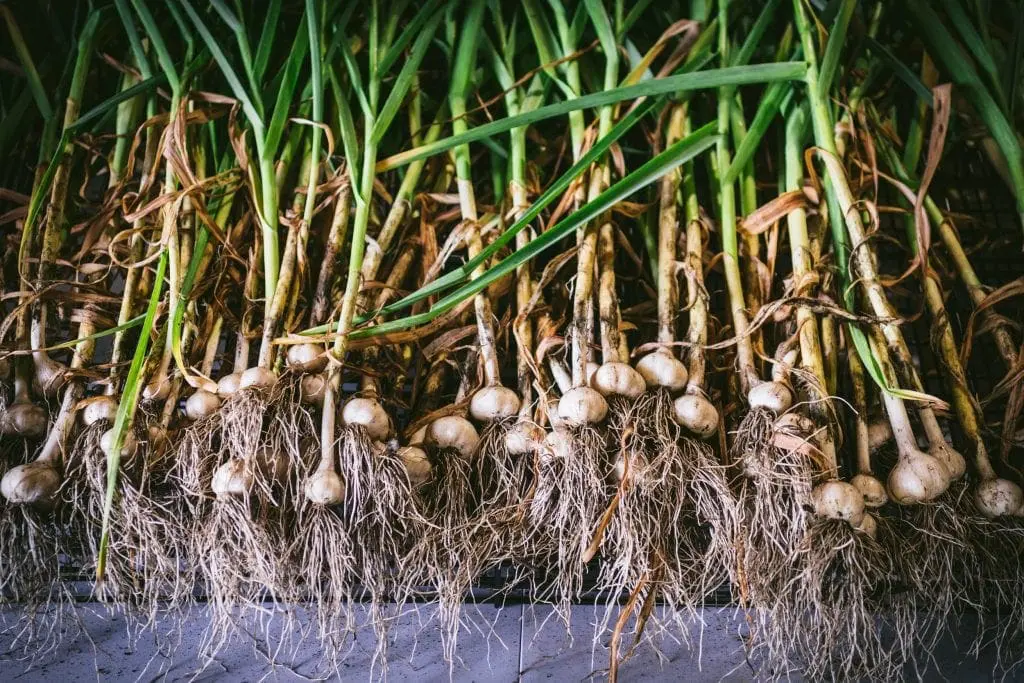
Garlic might just be our most frequently-used spice. We dedicate more and more garden space to growing garlic every year, and somehow it’s still never enough.
You’ll find it in almost every savory dish on this blog, often cooked with onions as a base. We’ve picked out a few recipes that use garlic in different ways.
- The Most Delicious Garlic-Butter Shrimp Scampi
- Gingery Chicken and Rice Noodle Soup with Crispy Garlic
- Nettle Risotto with Green Garlic and Taleggio
- Tahini Sauce With Lemon and Garlic
- Marinated Goat Cheese with Garlic and Thyme
Hot tip: unless you’re grating garlic to keep raw in a dip, please interpret any recipes you find that specify a single clove of garlic to really mean “use three cloves of garlic”.
GROUND CHERRIES
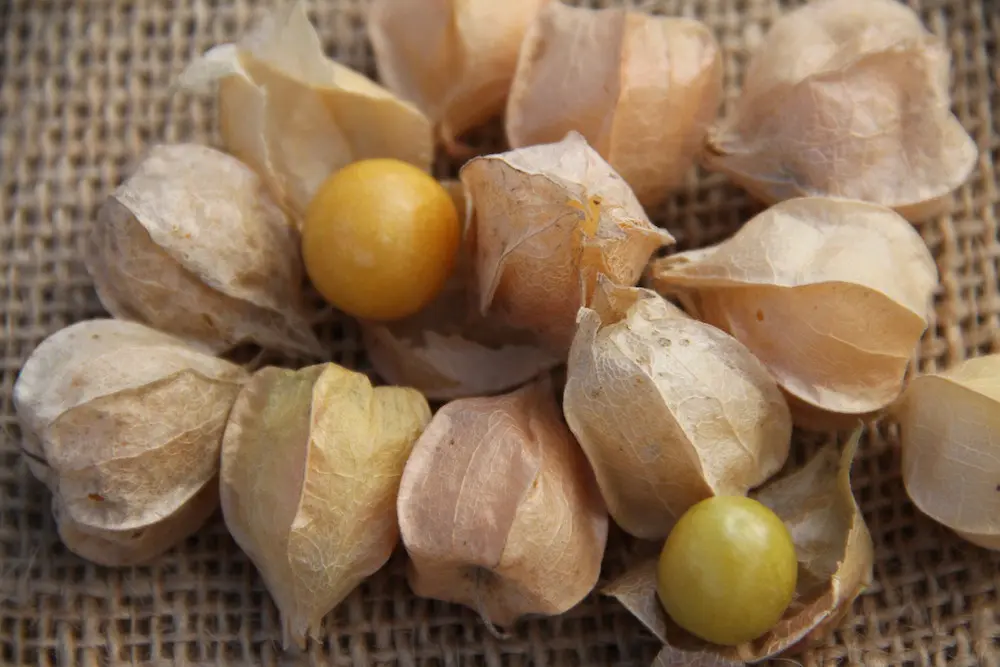
Ground cherries, somewhere between a tomatillo and a gooseberry, look like orange globes inside a papery lantern. They’re a little tart and a little sweet.
You can use them in place of tomatillos in a salsa verde. You can also cook them into a pie in place of any other fruit (try combining them into an apple pie or sweet berry crumble).
KALE
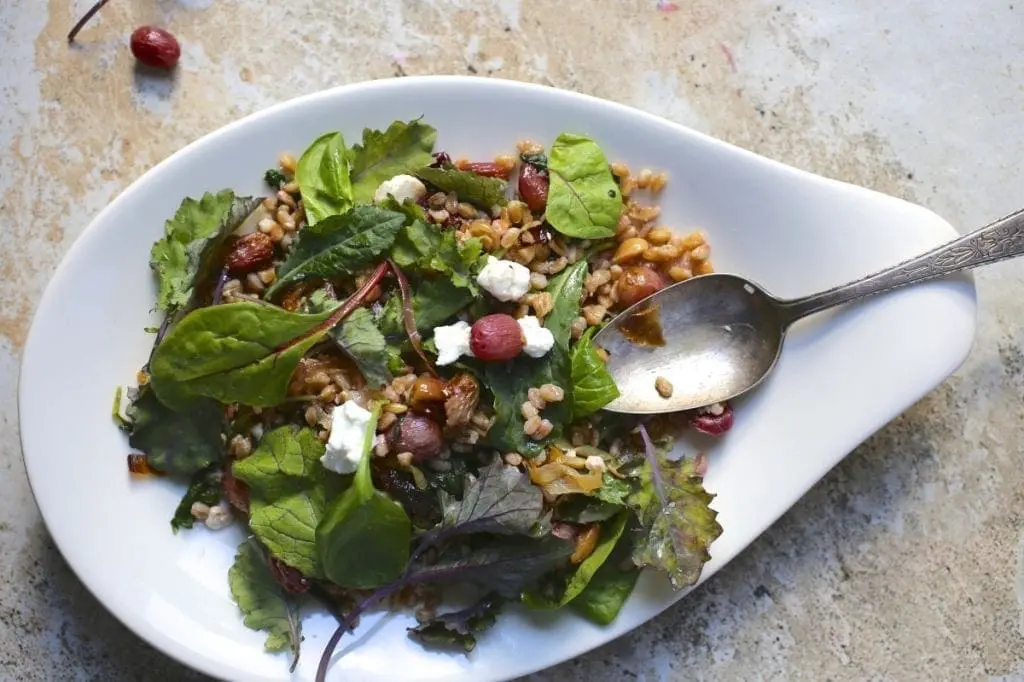
We love using baby kale leaves in a salad — here with farro, roasted grapes and goat cheese.
Kale is grown in the cooler months, so you’ll find it in spring or winter CSA produce shares. Keep the tender, baby kale leaves for a salad, and cook the larger leaves or use in a pesto.
LEEKS
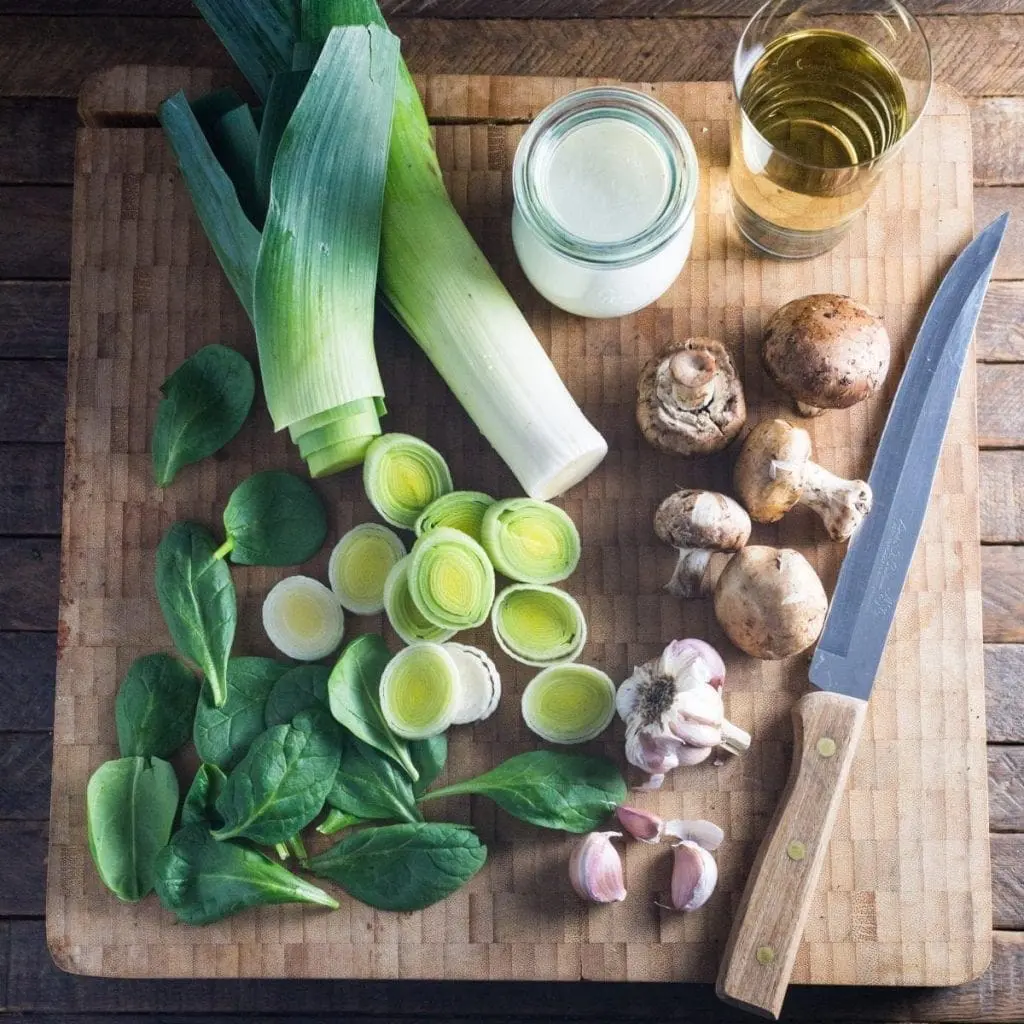
Leeks, cooked down, are a perfect creamy green base for any savory pot dish.
They’re grown in sandy soil and a lot of that grit ends up between the layers. Cut off the root ends and top, dark green leaves, split the leek into two long halves, then slice into half circles. Soak in two or three changes of water to rinse off the grit.
ONIONS
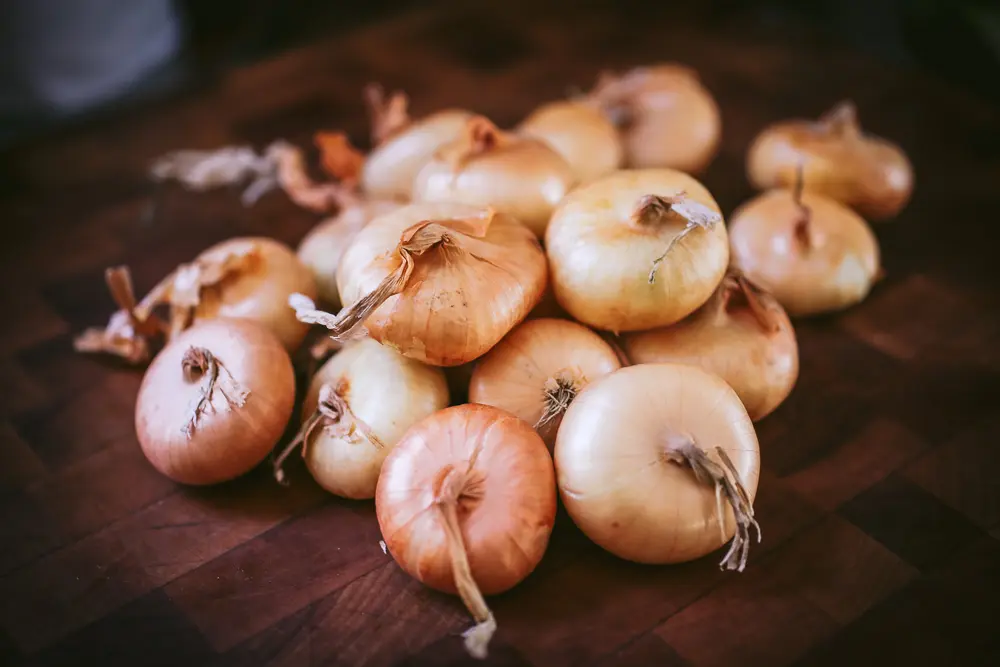
Along with garlic, onions form the basis for pretty much every savory dish we cook. Here are a few other kinds of recipes where the onion is the hero:
- French Onion Soup with Garlic Butter Croutons
- Caramelized Red Onion and Pear Tarts with Goat Cheese and Spicy Honey Drizzle
- Red Onion Jam with Wine, Honey and Thyme
- Brussels Sprout Pizza with Balsamic Caramelized Onions and Goat Cheese
There’s also a recipe for Sherried Onion Dip in our cookbook, Cork and Knife.
PARSNIPS
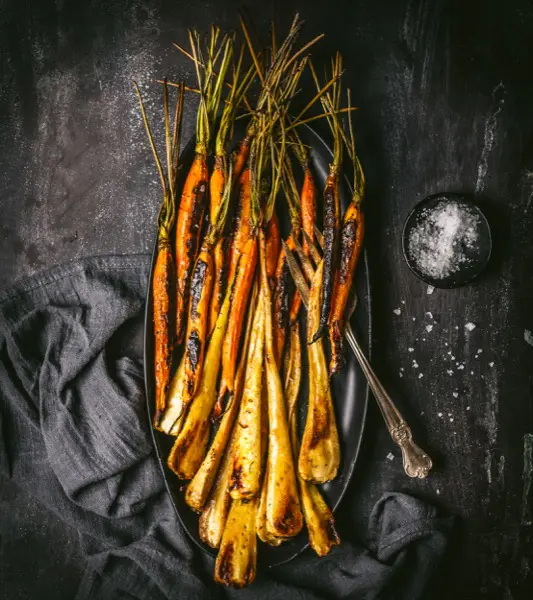
Maple and Bourbon-Glazed Carrots and Parsnips (see link to recipe)
We most often like to roast up parsnips in the same way as carrots – often along with them. They happily take a little extra flavoring in the cooking — our preferred recipe is Maple and Bourbon Glazed Root Vegetables, which you can find in Cork and Knife.
PEAS AND SHOOTS
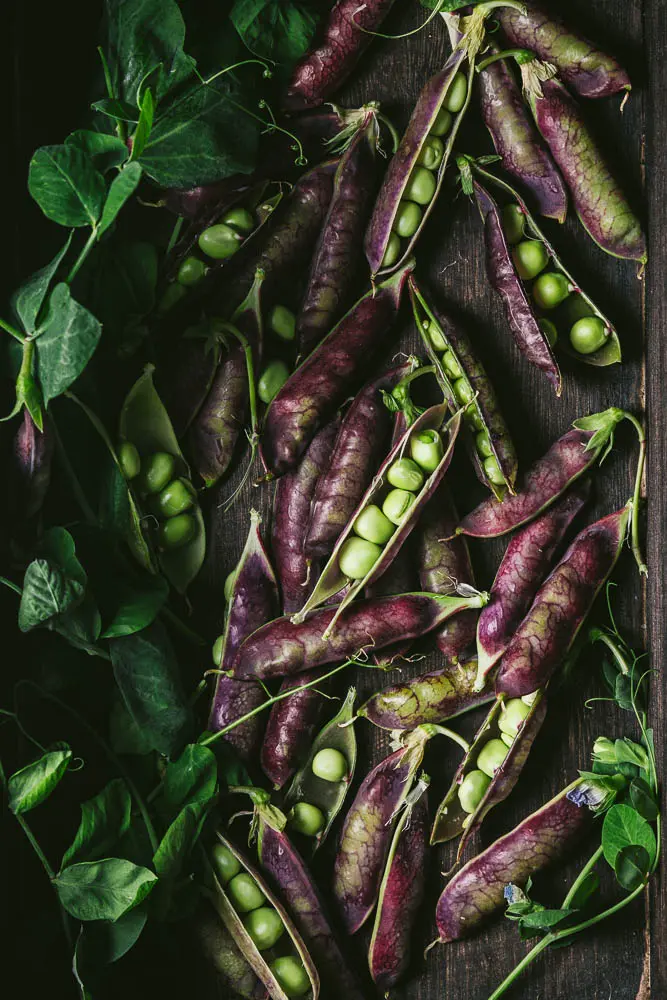
Peas fresh from their pods
Peas love growing in the cool spring months and are one of the first veggies you’ll see in your CSA produce share. The shoots are wonderfully tender and, simply dressed, form their own salad.
PEPPERS
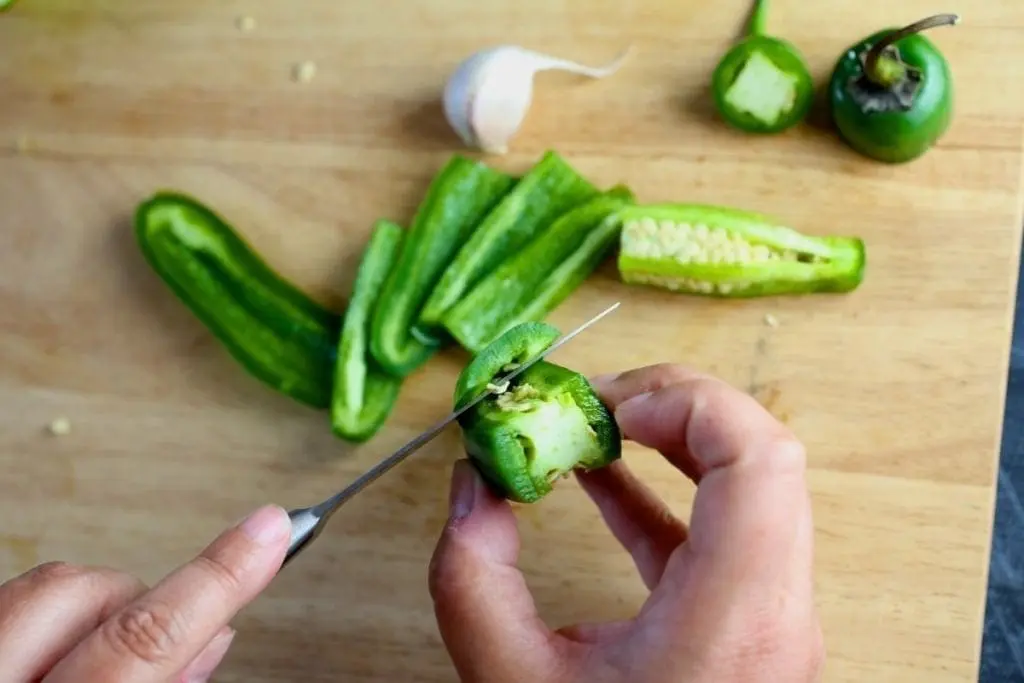
Bell peppers are best roasted whole until black, when you can peel off the charred exterior, remove the seeds and chop the tender, sweetened, insides. You can also de-seed and finely chop the flesh before sautéing like onion and celery.
Spicier cultivars add heat to any dish. Here are a few ways we’ve used these varieties.
POTATOES
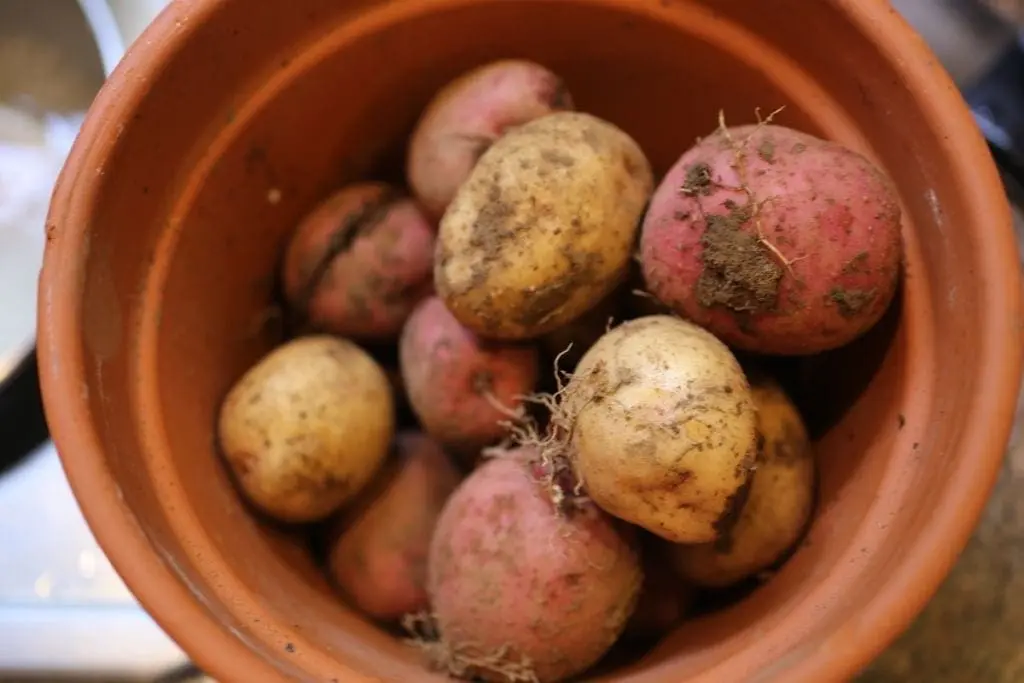
We’ve only grown potatoes once. That year, I buried twelve, waited until the vines grew, flowered and died, and dug up … twelve potatoes. Fortunately, farms are better at this sort of potato math, and your CSA share will likely include a good amount.
RADISHES
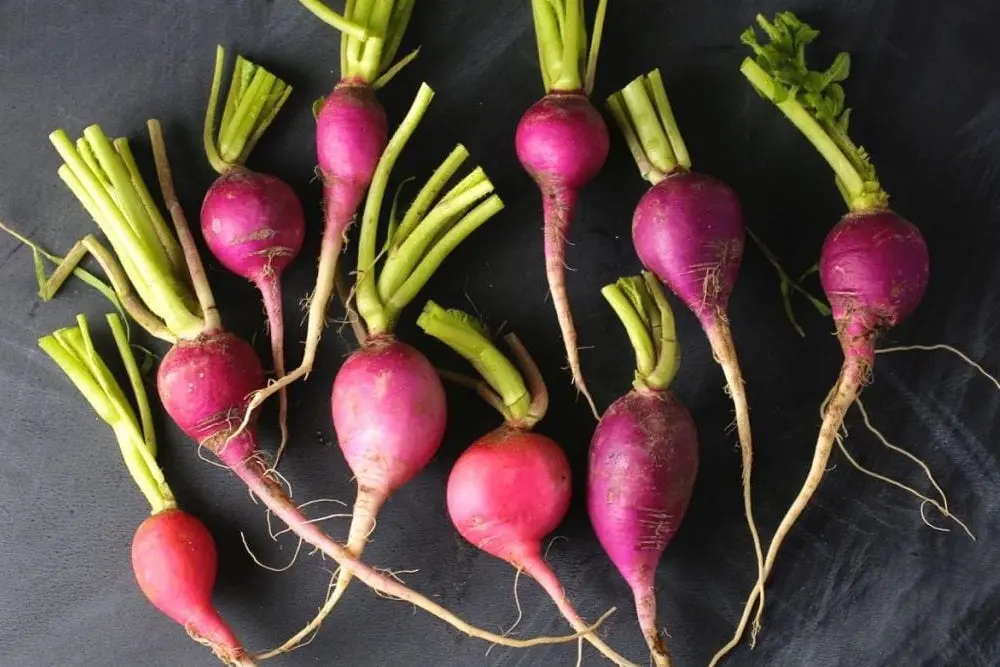
Radishes look so cute and unprepossessing, I always forget how thoroughly spicy they are. That heat makes them a perfect assertive side, or even a snack by themselves. We also love to pickle them, which moderates their heat a little.
RAMPS
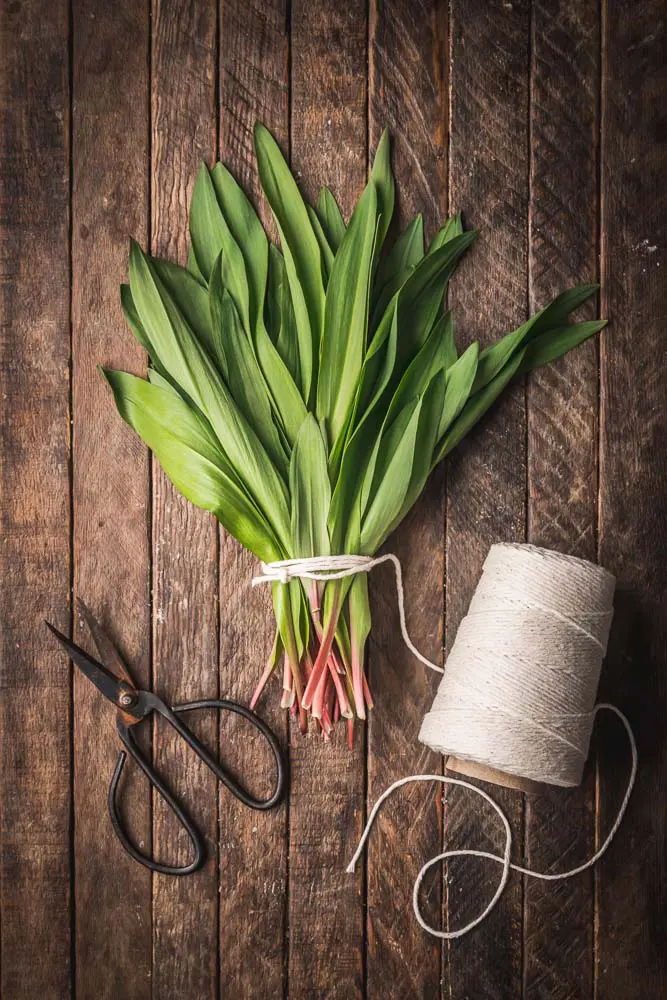
For a long time, supply of ramps exceeded demand: farmer’s markets few people knew what to do with them. Now, the secret’s out, and these garlicky delicacies are often hard to come by when in their brief spring season. They also need to be harvested responsibly (leaving the bulbs in the ground) to ensure they’ll come back in following years.
Our local journalist Brian PJ Cronin wrote about ramps in the Highlands Current, where you can find more information on careful foraging.
If you’re lucky enough to get ramps in your CSA share, we have some great ways of cooking them.
RHUBARB

Matt has a British fondness for rhubarb that’s never quite gone away, even when the fruit itself is hard to find. When we can get some in sufficient quantity to cook up a dish, we’re delighted. It excels in adding that unique flavor to a sweet recipe or even a cocktail.
RUTABAGA
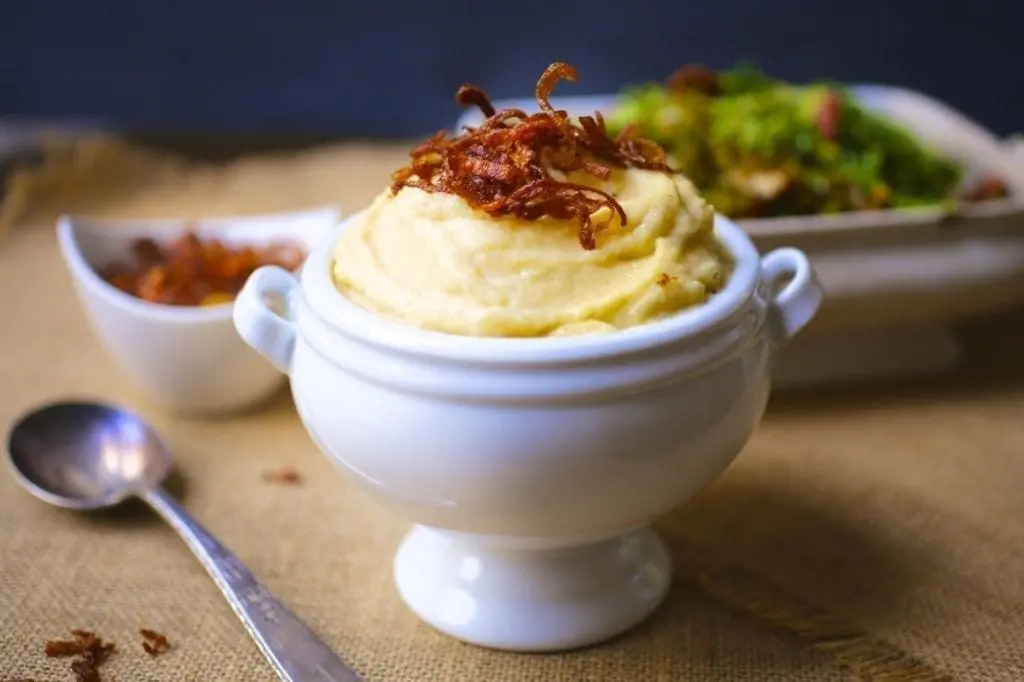
Rutabaga (also called swede or yellow turnip) daunts many people with its sheer size (hint: one large rutabaga, or two small, is more than enough for any recipe). But once you peel off the tough outer layer and chop it with a large, sharp knife, it boils, steams or roasts like potatoes.
Other recipes are available, but we like to believe that our recipe for whipped rutabaga (the crispy shallots are obligatory) is the best.
SHALLOTS
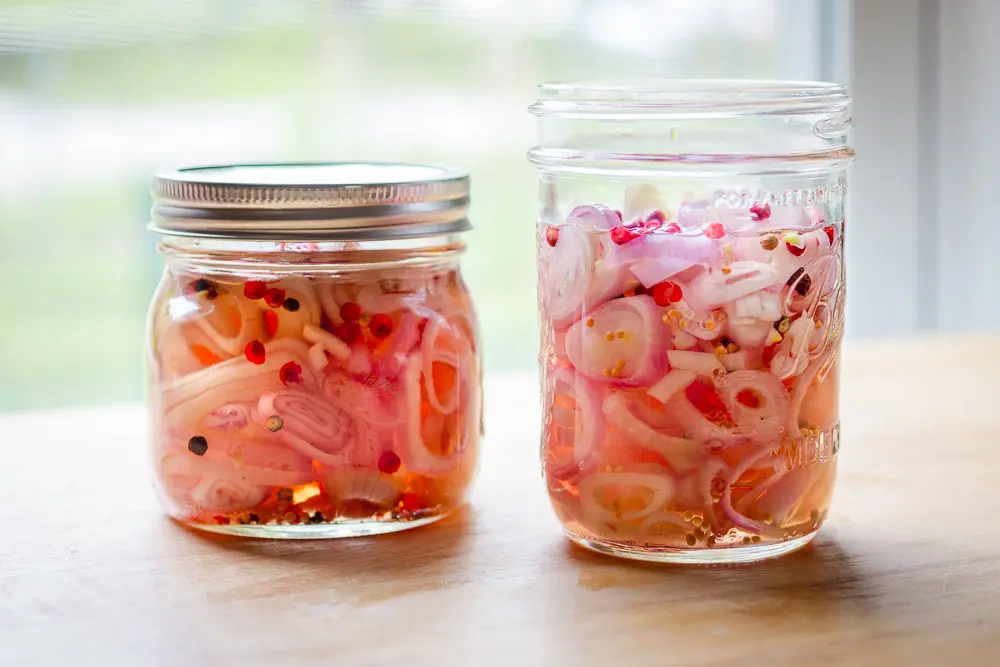
If you think of shallots as little onions, you’re not too far off, and you can use them in any recipe where you would use onion. Their flavor is more delicate, though, and they’re a great raw addition to salads where onions would be overpowering.
We also pickle them in the same way as red onions, and we crisp them up as a delicious topping for rutabaga.
SPINACH
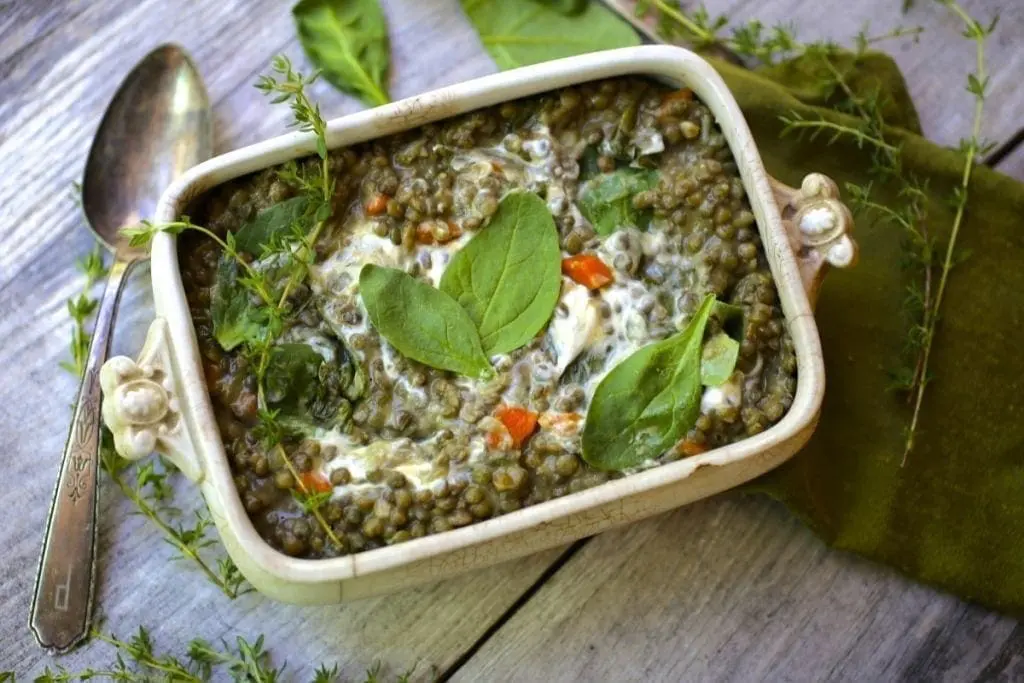
Spinach is often referred to as a nutritional powerhouse, and we’re not going to argue with that. It’s also a hardy green that can be cooked into a huge range of recipes.
Small, baby spinach leaves are tender enough to use in a salad. Once they grow and become tougher, you’ll want to cook them down. (They may only require a brief blanching, in which case you can drain and then squeeze the leaves to remove their water content.)
SWEET POTATOES
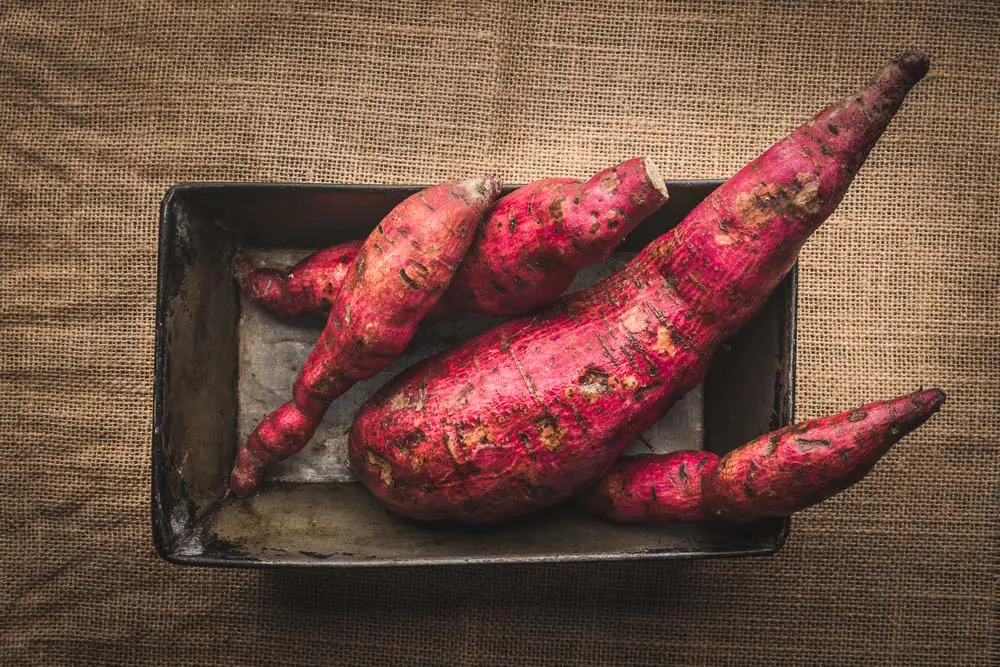
Sweet potatoes are likely to show up in your CSA produce share at some point in the year. They can be used in almost any potato dish, but they’ve a higher sugar content than potatoes, so will tend to burn if over-roasted. We like them roasted whole in foil, then halved and slathered in butter.
They also grace our autumn tables and Thanksgiving menus combined with seasonal flavors like maple syrup and miso.
SUMMER SQUASH
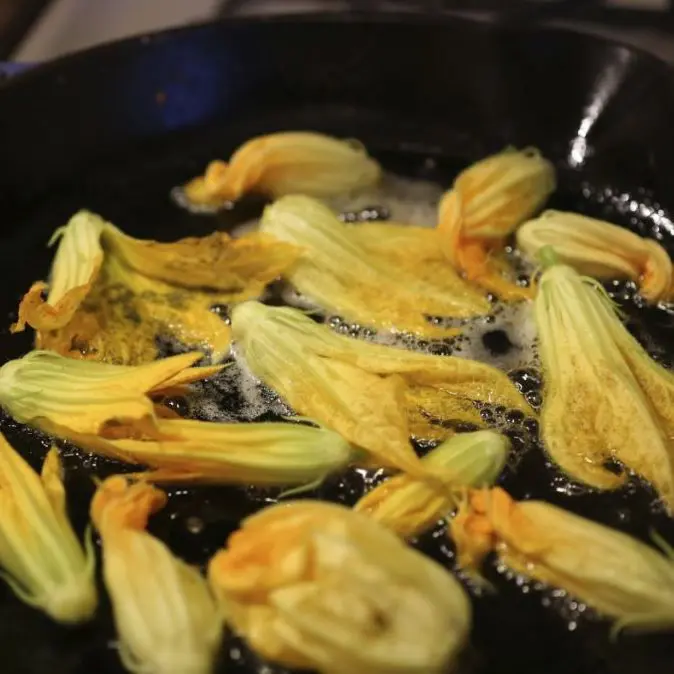
Fried zucchini blossoms
While there are several varieties of squash grown in summer months, zucchini (or courgettes in much of Europe) is probably the one most people are familiar with. You’ll definitely see it in your CSA produce.
Summer squash is a perfect addition to a stir fry – no need to peel, just cut into medium cubes and fry until the edges are soft and nicely charred. Whenever we have a glut of zucchini, we make fritters, or, if we’re feeling in a sweet mood, zucchini cake! If you’re lucky enough to get blossoms, fry them up (optionally filled with ricotta before they go in the pan).
TATSOI
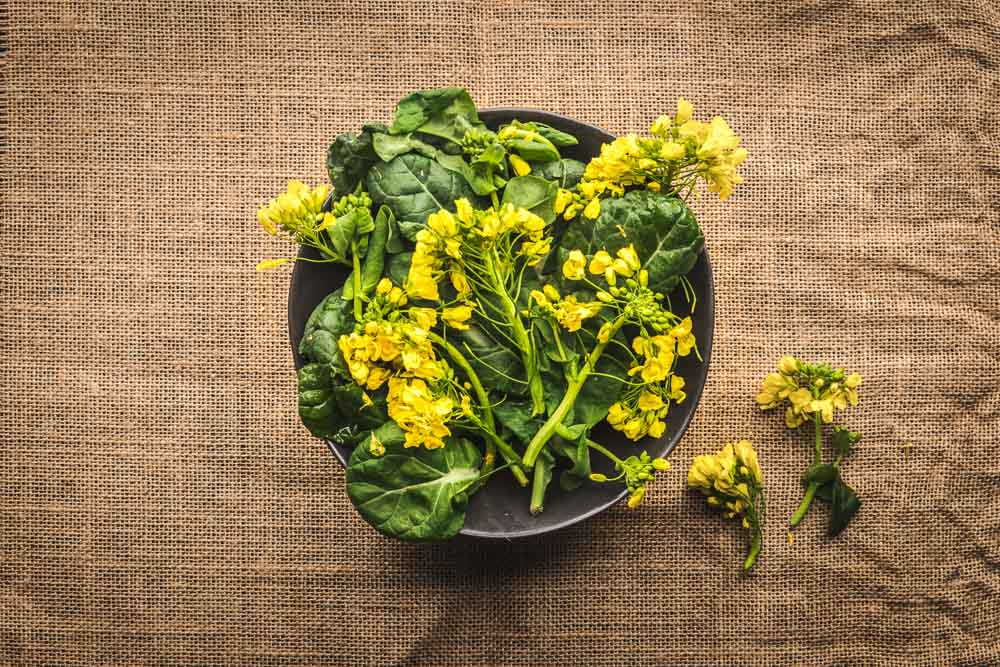
If you ever pay attention to the Latin names for vegetables, you will have encountered brassica rapa. Unfortunately, that classification tells you not very much at all, since it refers to a huge slew of greens in the field mustard family, including napa cabbage, turnips, bok choy, broccoli rabe, and this beautiful cultivar, tatsoi (or tat choi).
Since these greens are largely interchangeable in the kitchen with a few differences in flavor, texture and size, we’ll refer you to the Spinach and Broccoli Rabe sections of this article for ways to use your tatsoi greens. They’re lightly mustardy (not quite as strongly as broccoli rabe), so expect a little heat if you munch them raw.
If you’re lucky enough to get flowered tatsoi among your CSA produce, know that you can chop, cook and eat the whole thing – or save the flowers for sprinkling into a salad.
TOMATOES
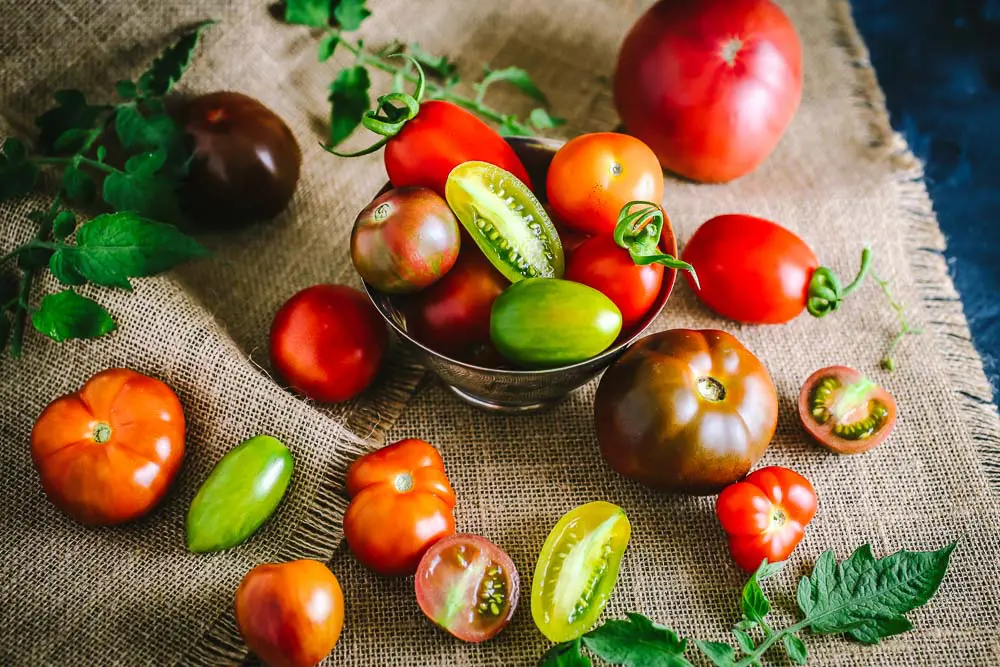
Tomatoes are probably the single vegetable that we absolutely refuse to buy from the store until they’re in season in the summer. If you get them in your CSA produce share, you know they’ve been grown for flavor and not for lengthy transport from other states or even from outside the country.
Big heirloom varieties are worth their weight in gold. If we can keep them fresh, we will — on a sandwich, or in a salad — but they also rule as the hero in a soup or on a grilled skewer.
WINTER SQUASH

Acorn squash
Between the months of August and March, it’s rare that a week goes by when the smell of roasting winter squash doesn’t permeate the house. We’re fortunate in the variety available locally — acorn, butternut (and its variations including honeynut), delicata, kabocha, pumpkins, and spaghetti squash are just some you’ll encounter among your CSA produce.
For acorn squash, we usually halve them, remove the seeds, and slather the insides with oil, mustard and maple syrup. For larger squashes, we’ll peel them (except for the thinner-skinned delicata which we consume skin and all), seed, and cube. Make sure you apply plenty of olive oil and a good sprinkle of salt and pepper before roasting! Here are some ways we like to use our winter squash bounty. You can more or less substitute any squash you have in any of the recipes.
- Brown Sugar and Mustard Glazed Acorn Squash
- Mustard and Maple-Glazed Butternut Squash stuffed with Farro and Winter Greens
- Roasted Delicata Squash with Miso-Maple Butter
- Thai Coconut Curry Butternut Squash Soup
- Curried Butternut Squash and Apple Soup with Maple Cream
- Butternut Squash Polenta
You can also find recipes for Soy-Braised Kabocha and Farrotto with Butternut Squash in our book, The Ultimate Dutch Oven Cookbook.
